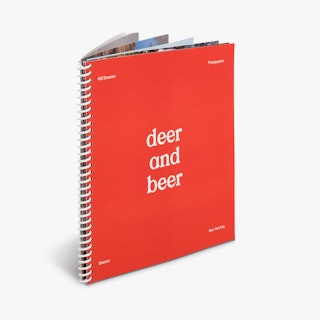Why More Companies Are Turning to Local Booklet Printing Services
Why More Companies Are Turning to Local Booklet Printing Services
Blog Article
The Vital Guide to Understanding Booklet Printing Options and Techniques
The process of booklet printing entails numerous considerations that can considerably affect the last item. From selecting the appropriate layout and dimension to comprehending the nuances of binding methods, each selection plays a necessary function. Furthermore, aspects such as paper stock and printing techniques more influence the performance of the brochure. As one browses these options, it comes to be important to comprehend how they adjoin and what that implies for the overall result.
Comprehending Booklet Dimensions and formats
When taking into consideration brochure printing, understanding the numerous formats and dimensions available is vital for achieving the wanted presentation. Brochures can be created in many formats, including saddle-stitched, spiral-bound, and perfect-bound, each offering unique advantages. Typical dimensions vary from conventional letter (8.5 x 11 inches) to smaller sized options like A5 (5.8 x 8.3 inches), enabling for adaptability based upon material and target audience.Selecting the appropriate size can affect both the format and reader interaction. Bigger dimensions might fit aesthetically driven material, while smaller styles may be more easy to use and mobile. In addition, the number of pages affects the choice of binding technique, as thicker brochures might call for sturdier bindings. Ultimately, recognizing these facets permits a more tailored technique, ensuring that the final product lines up with the designated message and visual, improving the general performance of the interaction.
Choosing the Right Paper Stock

Binding Techniques: Considerations and alternatives
When it involves binding techniques for pamphlets, numerous alternatives are offered, each with distinct advantages. Saddle stitch binding offers a cost-efficient solution for thinner brochures, while excellent binding methods supply a more refined seek thicker magazines. Wire-O binding attracts attention for its sturdiness and simplicity of use, making it perfect for papers that call for adaptability.
Saddle Stitch Binding
Saddle stitch binding supplies a practical and affordable service for assembling booklets, making it a prominent choice among organizations and authors. This binding method entails folding sheets of paper in half and stapling them along the fold line, developing a cool and well organized look. Typically suitable for pamphlets with a lower page count, saddle stitching is perfect for magazines, sales brochures, and educational products. The simplicity of this method allows for fast manufacturing and is typically favored for advertising products or short runs. It is necessary to note that saddle stitch binding may not be appropriate for thicker pamphlets, as the spinal column might not hold up under boosted weight. In general, it stays a trustworthy alternative for numerous printing projects.
Perfect Binding Strategies
Perfect binding is a commonly utilized technique that gives a polished and professional surface to booklets and magazines. This technique involves gluing the pages with each other at the back using a strong adhesive, enabling a tidy side and the ability to hold a bigger number of pages contrasted to saddle stitching. Perfect binding is especially suitable for thicker brochures, such as catalogs and annual reports, where a tough, flat spinal column is preferred. Additionally, it offers the choice for a printed cover that can be designed to enhance aesthetic allure. Considerations such as web page matter, paper weight, and the planned usage of the pamphlet need to be taken into account, as they can affect toughness and total high quality.
Wire-O Binding Options
Wire-O binding, known for its sturdiness and adaptability, supplies an excellent option for brochures that need simple web page turning and an expert appearance. This binding method utilizes a series of metal loops that hold pages securely, enabling them to lie flat when open. It is especially appropriate for brochures, presentations, and manuals due to its robust nature. Wire-O binding is readily available in numerous shades and diameters, suiting various page counts and thicknesses. In addition, it allows the incorporation of covers and tabs, improving the pamphlet's total aesthetic. Factors to consider for Wire-O binding consist of the choice of cable shade, the size of the loopholes, and the degree of customization wanted, all of which can profoundly affect the end product's look and capability.
Digital vs. Offset Printing: Which Is Best for You?
When choosing a printing approach for booklets, understanding the distinctions in between digital and counter printing is necessary. Digital printing uses modern-day innovation to produce high-quality prints rapidly and affordably, making it excellent for brief runs or projects needing fast turnaround times. It enables for customization, offering the capacity to publish on-demand with marginal waste.In comparison, balance out printing is a conventional method that masters generating big amounts with constant top quality. It includes transferring ink from a plate to a rubber blanket, then to the paper, which results in precise details and vibrant shades. Balance out printing normally requires longer arrangement times and is much more cost-efficient for larger volumes.Ultimately, the option in between electronic and counter printing depends on project requirements, budget, and wanted amount. For small, time-sensitive projects, electronic could be the Visit This Link very best choice, while offset might be better for larger, premium productions.
Creating Your Pamphlet: Tips and Ideal Practices
When creating a pamphlet, cautious interest to layout, font option, and color usage can substantially boost its effectiveness. A well-structured design guides the reader's eye, while ideal font styles ensure readability and communicate the desired tone. In addition, efficient use of shade can stimulate emotions and emphasize crucial information, making the total style much more impactful.
Choosing the Right Layout
Exactly how can one successfully pick the appropriate format for a booklet? It is essential to review the pamphlet's function and target audience. A clean, organized design boosts readability and interaction. Utilizing a grid system can help in straightening aspects consistently, developing a professional look. Additionally, integrating visual hierarchy with differing sizes and placements of pictures and message can lead the reader's eye and stress key info. It is additionally vital to leave sufficient white area, which protects against overcrowding and enables for far better focus. Ultimately, evaluating various formats through mock-ups can offer understanding into exactly how the layout performs in real-world situations, making certain that the end product fulfills both practical and visual needs.
Selecting Ideal Fonts
A well-chosen typeface can considerably enhance the general design of a brochure, enhancing the design and strengthening the content's message. The choice of fonts ought to think about readability, particularly for body message, as it ensures the info is easily accessible to all visitors. Sans-serif font styles are frequently favored for electronic styles, while serif font styles can provide a conventional feeling in published products. It's a good idea to limit font choices to 2 or three to preserve visual coherence. In addition, font you can try here style size plays an important role; headings should be distinctive yet not overwhelming, while body message ought to be comfortable for analysis. When choosing fonts, alignment with the brochure's style and target audience is essential for reliable communication and aesthetic allure.
Efficient Use of Shade
Shade functions as an effective tool in booklet style, forming understandings and guiding viewers emotions. It can stimulate feelings of count on, calmness, or enjoyment, relying on the colors picked. Developers ought to consider color theory concepts, ensuring that the chosen palette straightens with the pamphlet's message and target audience. For example, making use of cozy colors like red and orange can create necessity, while cooler tones like environment-friendly and blue foster tranquility.Additionally, contrast plays a vital function; complementary colors can improve readability and visual charm. Uniformity in shade use across web pages further enhances brand identification and communication. Eventually, efficient color application not only catches focus yet also reinforces the booklet's function, making it a necessary facet of effective layout.
Ending Up Touches: Coatings and Special Impacts
While several think about the material and layout of a brochure the most important components, the completing touches, such as finishes and special results, play an important duty in boosting its total allure. Coatings can give security and durability, ensuring that the brochure withstands wear and tear. Matte finishes supply an innovative, non-reflective surface, while glossy coatings can make shades appear more captivating and vivid. Special impacts, like embossing or aluminum foil marking, add a responsive dimension that can develop a remarkable perception. These methods this website can highlight particular areas, drawing interest to essential details or developing visual interest. Furthermore, UV covering can give a high-shine coating that elevates the general look.Together, these finishing touches not only enhance the pamphlet's aesthetic yet additionally interact professionalism and reliability and focus to detail, ultimately leaving a lasting effect on the visitor.
Cost Considerations for Brochure Printing
Understanding the numerous cost considerations for brochure printing is crucial for companies and companies aiming to optimize their budgets. Secret elements influencing prices consist of the choice of ink, paper, and binding methods. Better materials, such as exceptional paper or specialized inks, normally boost the general expenditure. Additionally, the dimension and web page count of the brochure play a substantial role; larger pamphlets need more resources and time to produce.Another important factor to consider is the printing technique, whether electronic or countered, as each has its very own rates structure and suitability for various amounts. Services need to likewise factor in design prices, which can differ based on complexity and the usage of expert services. Ultimately, shipping and handling charges can include in the total, specifically for big orders. By examining these elements, companies can make educated decisions that line up with their financial capabilities while accomplishing the wanted quality in their published products.
Frequently Asked Concerns
What Are the Environmental Impacts of Brochure Printing?
The environmental impacts of booklet printing include logging from paper production, carbon exhausts from transport, and waste generation from discarded products - Booklet Printing. Lasting techniques, such as using recycled paper and environmentally friendly inks, can alleviate these impacts
Exactly How Can I Make Sure Color Accuracy in My Pamphlet?
To ensure shade accuracy in a pamphlet, one need to make use of calibrated screens, utilize expert color accounts, carry out test prints, and select top notch printing services that use shade matching and proofing choices for finest outcomes.
What Is the Common Turnaround Time for Brochure Printing?
The typical turn-around time for pamphlet printing varies depending on the complexity and amount - Booklet Printing. Generally, it ranges from a few days to 2 weeks, affected by elements such as printing approaches and completing needs
Exist Minimum Order Quantities for Booklet Printing?

Can I Publish Brochures in Numerous Languages?
Publishing pamphlets in several languages is possible. Numerous printing solutions supply choices for multilingual or multilingual designs, enabling efficient interaction. Cautious preparation assurances that develop elements suit different languages without compromising readability or visual appeals. In addition, elements such as paper stock and printing techniques additional affect the effectiveness of the booklet. When taking into consideration booklet printing, understanding the numerous layouts and dimensions offered is important for attaining the desired presentation. When selecting a printing technique for booklets, understanding the distinctions between electronic and counter printing is crucial. In addition, the dimension and page count of the pamphlet play a substantial duty; bigger pamphlets need even more resources and time to produce.Another vital consideration is the printing method, whether electronic or offset, as each has its own pricing framework and suitability for various amounts. The ecological influences of booklet printing consist of deforestation from paper production, carbon emissions from transport, and waste generation from thrown out products.
Report this page